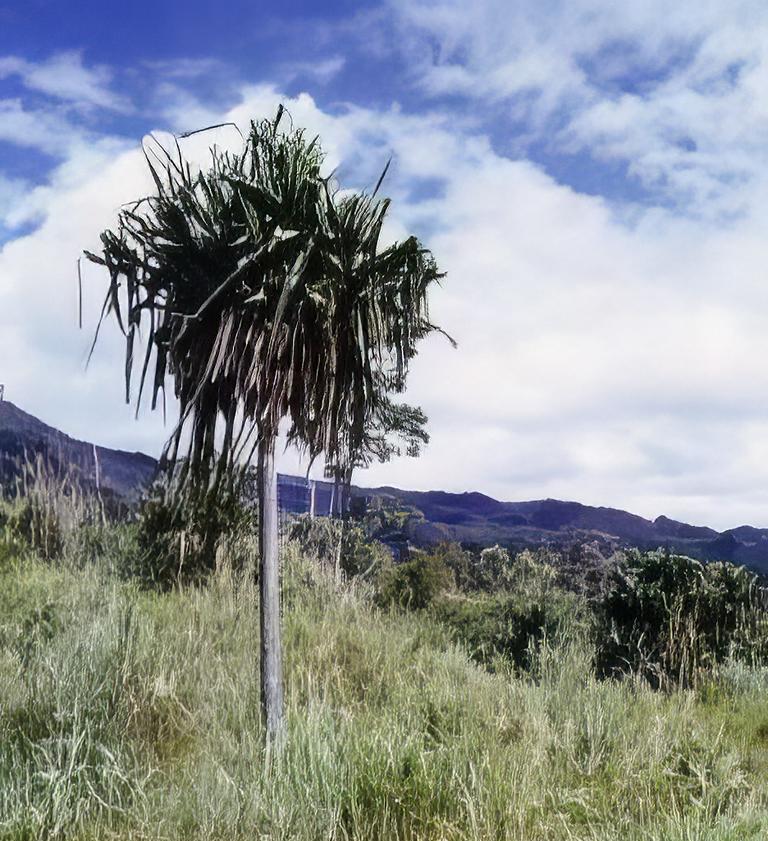Pandanus antaresensis H.St.John
국표에 없다.
Pandanus antaresensis
No common Tok Pisin or English name; Tok ples names: Mendi: pem, pembras; Imbongu: kupili
The plant

This pandanus grows naturally between about 1600 and 2500 metres altitude in the highlands. It often grows in swampy places. Most trees have several widely spaced branches. At the top of these, there is normally a shoot of leaves making a point which points upwards. The leaves are often a light green. They have thorns along the edge, although the thorns are normally less about the middle of the leaf. The cluster of nuts hangs down below the leaves on a long stalk.
The Pandanus antaresensis fruit
The fruit of this tree is made up of clusters of nuts grouped in groups of 4 or 5 nuts. Together they make up a round knobbed cluster about 30 cm across. As the fruit matures the cluster turns an orange colour and the small groups of nuts fall, one by one.
An individual group of nuts that fall look like this.


As the nuts dry out, lots of hairy-looking fibres can be seen. The shell is hard and must be broken with an axe or a stone. The nut inside is small. Because the shell is hard and the nut small some people don’t eat these nuts at all. Other people only eat them sometimes. But some people plant these pandanuses near their gardens and like the nuts
________________________________________________________________________________________________________________
Wild Karuka and another pandanus fruit species - Bushguide 101